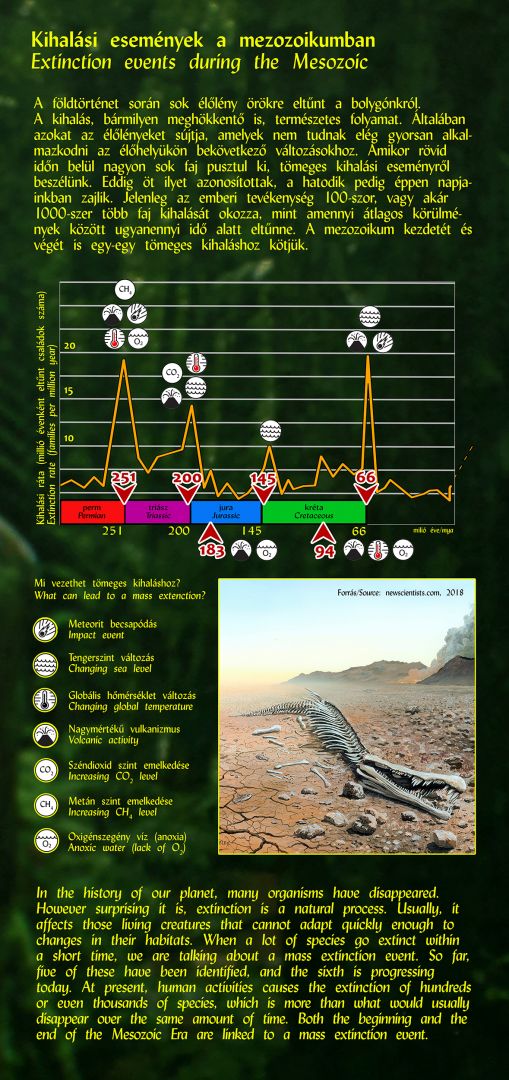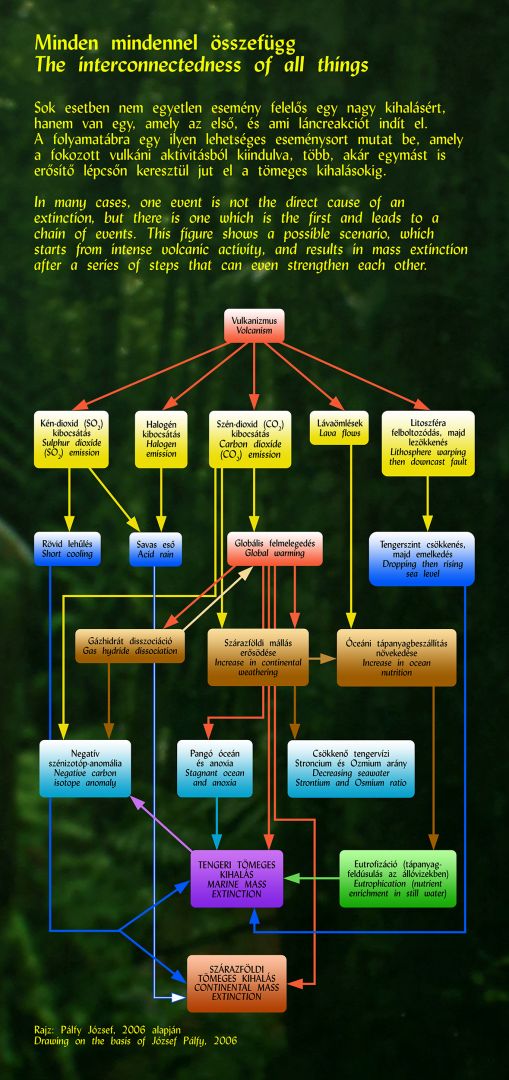EXTINCTION OF THE DINOS AND DAWN OF THE MAMMALS
Extinction events during the Mesozoic
In the history of our planet, many organisms have disappeared. However surprising it is, extinction is a natural process. Usually, it affects those living creatures that cannot adapt quickly enough to changes in their habitat. When a lot of species go extinct within a short time, we are talking about a mass extinction event. So far, five of these have been identified, and the sixth is progressing today. At present, human activities causes the extinction of hundreds or even thousands of species, which is more than what would usually disappear over the same amount of time.
Both the beginning and the end of the Mesozoic Era are linked to a mass extinction event.
Extinction events during the Mesozoic
251 mya: End Permian extinction
Possible causes: Siberian basalt volcanism, warming, meteorite impact (Wilkes crater), and oxygen deficiency in the oceans (anoxic event)
Affected: amphibians, reptiles, insects, trilobites, corals
200 mya: Triassic-Jurassic extinction event
Possible causes: underwater volcanism (Central Atlantic Igneous Province), CO2 level rise first in the oceans (and later in the atmosphere), atmospheric warming, sea level decrease
Affected: ammonites, mammal-like reptiles, Nothosaurs, “tablet teeth” turtles, Archosaurs
183 mya: The Pliensbachian-Toarcian extinction event
Possible causes: Volcanism in the southern part of Gondwana (Karroo-Ferrar province), and oxygen deficiency in the oceans (anoxic event)
Affected: mainly aquatic invertebrates
145 mya: Tithonian extinction event
Possible causes: extreme and prolonged marine regression
Affected: bivalves
94 mya - The Cenomanian–Turonian extinction
Possible causes: volcanism (Caribbean lava flow), global atmospheric warming, and oxygen deficiency in the oceans (anoxic event)
Affected: Pliosauridae, Spinosauridae, Ichtyosaurs
66 mya: End-Cretaceous extinction
Possible causes: meteorite impact (Chicxulub crater), volcanism (Dekkan trapp), and decrease in sea level
Affected: Dinosaurs, prehistoric flying reptiles, ammonites, Pleziosaurs, Mosasaurs, many plants and mammals
In many cases, one event is not the direct cause of an extinction, but there is one which is the first and leads to a chain of events. This figure shows a possible scenario, which starts from intense volcanic activity, and results in mass extinction after a series of steps that can even strengthen each other. Drawing on the basis of József Pálfy (2006).

